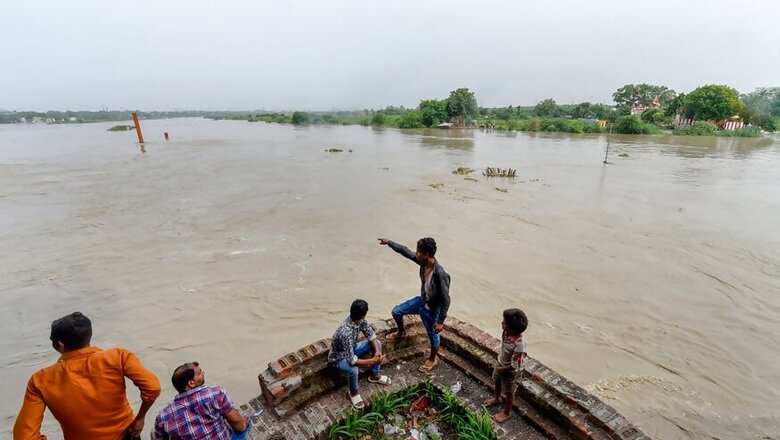
views
New Delhi: The Yamuna's stretch downstream of the Wazirabad barrage in Delhi is severely contaminated and unsuitable for aquatic life, preliminary findings of an ongoing study suggest.
The Uttarkhand-based National Institute of Hydrology, which is conducting the study sponsored by the National Mission for Clean Ganga, recently submitted a preliminary report to the Yamuna Monitoring Committee, set up by the National Green Tribunal.
After examining river water samples for essential parameters like pH, electrical conductivity, dissolved oxygen (DO), biochemical oxygen demand, total nitrogen, etc., a team of scientists deduced that "the river stretch downstream of Palla (below Wazirabad barrage) is severely contaminated and needs immediate attention".
"The river water in this segment is not suitable for aquatic biota. Out of the seven drains identified during a field visit in the reach between Palla and Delhi Railway Bridge, the DO levels at five locations were not detectable," the interim report said.
The required DO value for propagation of wildlife and fisheries is more than 4 milligrams per litre. However, some fish species can survive at DO concentration as low as 1.4 mg per litre.
The DO concentration in the river varied between 0 and 8.5 mg per litre in the stretch between Poanta Sahib in Himachal Pradesh and Delhi, it said.
The levels have been satisfactory at Poanta Sahib (Himachal Pradesh), Kalanaur (Haryana), Mawi (Uttar Pradesh) and Palla (Delhi), except in 2016-17, when the values at Mawi and Palla dropped to 1.1 mg per litre on a few occasions, it said.
"The DO level in Delhi has remained below 1 mg per litre over the last two years and cannot sustain fishery. This is due to dumping of untreated effluents in the river and the situation can be improved by proper treatment of wastewater entering it," the report said.
The team of scientists conducted a survey on June 7-8 and found that the DO values were non-detectable in the river stretch downstream of the Wazirabad barrage. They observed a high of level DO in Wazirabad -- at 11.0 mg per litre -- due to the presence of algae and occurrence of photosynthesis.
The report said the biochemical oxygen demand (BOD) value was the highest in Delhi -- 98.1 mg per litre, meaning the river's stretch in the national capital is severely polluted.
BOD is the amount of dissolved oxygen needed by microorganisms in the biological process of metabolising organic matter in water. "Nitrogen concentration in the river water in Delhi is almost 20 times higher most of the time," the report said.
Nitrogen concentration less than 0.7 mg per litre denotes good water quality, 0.7-1.5 mg per litre denotes fair water quality, and values greater than that represent poor water quality and eutrophic state.
Excess nitrate is not toxic to aquatic life, but increased nitrogen may result in overgrowth of algae that can decrease the dissolved oxygen content of the water, thereby harming or killing fish and other aquatic species.




















Comments
0 comment